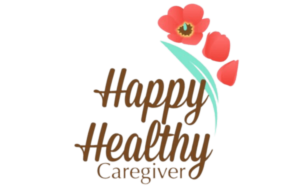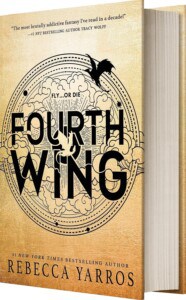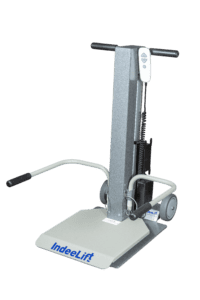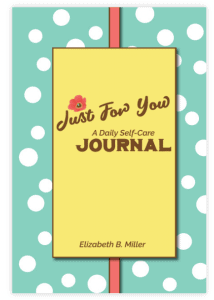
Steve Powell cared for both of his parents as their health and mobility declined. His experiences mitigating many falls for his parents, prompted his invention of a device designed to lift individuals safely and comfortably off the floor.
In this episode, Steve and I chat about aging in place, fall prevention, perfectionism, and why he has the well-deserved nickname of ‘The Singing Wine Maker.’
Scroll to the bottom of this page to see the full-show transcription.
Episode Sponsor – Eve
Loneliness and isolation are problems that many of us face, and the health consequences are serious – equivalent to smoking 15 cigarettes per day, according to the Surgeon General. So today I’d like to introduce you to a new companion service aimed at Seniors and people who live alone, called Eve. Eve is available to chat by phone 24/7 and speaks multiple languages. She hosts yoga classes, plays word games, does cooking lessons… the list goes on. She also sends real time alerts and daily health updates to Caregivers to keep you in the loop. And it all starts from as little as $15 per month. Sounds too good to be true? Check it out for yourself at IamEve.ai
Listen to the show: Managing Falls with Steve Powell
Watch the show
Words of Encouragement
Each episode starts with a few words of inspiration or motivation from the Happy Healthy Caregiver Jar. Create your jar by downloading the Caregiver Jar inserts. Enhance your jar with the Caregiver Jar refill pack.
Links & Resources Mentioned
- WCN Streaming Radio – download the app and listen on demand
- We are grateful for our listeners helping to expand our audience by sharing the podcast and submitting ratings and reviews! It’s easy to do. Just go to: Podcast Review or Google Review
- Professional Keynote Speaker, Caregiving & Self-Care – hire Elizabeth for your next corporate event
- Connect with Elizabeth on Instagram
- WCN University – a digital course library for family caregivers
- Schedule your complimentary coaching session for family caregivers
rs. Plus – upcoming events, special offers, and more! Visit http://bit.ly/HHCeNews
- What I’m Currently Reading:
- My Favorite Thing:
- My Wells Fargo Deals
- IndeeLift – use code HHC100 for $100 off!
- All of the prompts from the lightning round segment of the show are borrowed from Elizabeth’s book Just For You: a Daily Self-Care Journal. The journal is also now available as a digital download.
Some of the links on this page are affiliate links. When you click on a product and choose to purchase it, I receive a small thank you from the associated company which helps reimburse me for my blogging, podcast, & site expenses. There is no additional cost to you.
Favorite moments & quotes from the episode
Stay in touch
- Rate and review the podcast.
- Subscribe to the show on your favorite podcast platform!
- Instagram: HappyHealthyCaregiver
- Join the Happy Healthy Caregiver Facebook Group and our Facebook Page
- Twitter: @HHCaregiver
- Subscribe to the Happy Healthy Caregiver newsletter to stay updated on the latest posts & events.
- Email Elizabeth with questions or comments about the show or to request information about sponsoring the show.
Full Transcription
Falling and not being able to get up is one of the primary reasons people are, are forced into convalescent care and everybody wants to stay at home. And if you give them the right tools to stay at home, they can do that for a long time. And that’s, that’s our goal.
Caring for aging parents or other loved ones while working, raising Children and trying to live your own life, wondering how to find the time for your personal health and happiness. Well, you’re in the right place. Welcome to the Happy Healthy Caregiver podcast to show where real family caregivers share how to be happy and healthy while caring for others. Now, here’s your host, Family Caregiver and certified Caregiving consultant, Elizabeth Miller.
Hello, everyone. Thanks for tuning in to the Happy Healthy Caregiver podcast, which is part of the whole care network. If this is your first time listening, welcome. This is a show produced biweekly to help family caregivers integrate self care and caregiving into their lives. I am grateful for my listeners. Your ratings and reviews have helped expand this show’s reach and impact more caregivers lives. If you haven’t left a rating or review for the podcast yet, consider doing so by visiting bit dot Lee forward slash HHC pod review and that’s all caps HHC pod review. Podcasting is work. It’s work that I enjoy but still work and your reviews are like unexpected tips in my tip jar. So thank you so much for that. I’d like to thank our episode sponsor Eve. Loneliness and isolation are problems that many of us face and the health consequences are serious equivalent to smoking 15 cigarettes per day according to the surgeon general. So today, I’d like to introduce you to a new companion service aimed at older adults and people who live alone called Eve Eve is available to chat by phone 24 4873 and speaks multiple languages. She hosts yoga classes plays word games, does cooking lessons. The list goes on. She also sends real time alerts and daily healthcare updates to caregivers to keep you in the loop and it all starts from as little as $15 per month. Sounds too good to be true. Check it out for yourself at I AM Eve dot A I, that’s I am Eve dot A I for this episode segment of what I’m reading. I recently completed two very big books in a fantasy series that my daughter recommended and gifted me. Each book had over 500 pages, not my usual genre or length of books. The first book in the series was called Fourth Wing by Rebecca Yaros. This book won many awards. It’s a romantic adventure filled series with dragons who bond to human cadets in book one. You’ll experience a university experience like no other. And if you like the Hunger Games or the Divergent series or even Game of Thrones, I think you’ll want to give this one a try. My review on goodreads said that when you want to devour an almost 500 page book and are ready to dive into the second of the same length. You know, this is a good read. Dragons, Forbidden Love War, family loyalty action. Yes, please. Five out of five stars for book one and I gave four out of five for book two. The favorite thing I want to share with you in this episode is something that I discovered through my banking app. I Bank at Wells Fargo. And I suspect that some of you do too. One perk that I did not take advantage of for a while was to activate some of the my deals that Wells Fargo offers with participating partners. Basically, you open up your Well cargo app, scroll down a little bit until you see my Wells Fargo deals. These aren’t automatically applied. You have to do something, you have to activate them to get the cash back in your Wells Fargo account. Basically, you just read through the list of offerings. You open up the offerings that you think that you may use. There’s no disadvantage from activating them and you activate what you think you might use. Right now. I see deals in there for Hilton American Eagle Brooks shoes, home chef Dell Little Caesars, top Golf and Buffalo Wild Wings. I’m always texting my kids reminders to activate deals as well as we all need to pinch as many pennies as we can in this economy. The deals are always changing. So when you’re in your app doing other stuff, just be sure to check them out. Let’s meet today’s caregiver in the spotlight, Steve Powell cared for both of his parents as their health and mobility declined. His experiences mitigating many, many falls for his parents prompted his invention of a device designed to lift individuals safely and comfortably off the floor. In this episode, Steve and I chat all about this and we also talk about aging in place fall prevention, perfectionism and why he has the well deserved nickname of the singing winemaker. Enjoy the show.
and relax a little bit and, and go to your happy place. The happy place is something that people forget about. What is it? Yeah. Yeah. And there’s CBD Gummies and THC Gummies and Delta, depending on what state you live in, which ones are available to you. I know you’re in California. You have more available probably than we have here in Georgia. Yeah. Yeah, it’s pretty much everything. But, but you know, it’s, you, you, I, I have horrible experience with people in alcohol so I could never recommend somebody to do something like that. But, but I have experience with these gummies that makes people sleep better, give some calmness. And, uh, it’s, uh, there’s, there’s real help out there. That is, uh, that’s, that doesn’t cost them much and is, uh, is, is actually acceptable technology. Yeah. Yeah. True, true. Um, what’s your latest go to Quick and healthy meal? I do a lot of salads but I’m really a sushi fan because it’s fresh and it’s, and it’s, uh, so, uh, my healthy meal is, is some sashimi with, uh, uh, half an avocado and, and a little bit of brown rice and uh and some wasabi to spice it up. Yeah. Yeah. Do you have a place you go nearby or do you make it at home? No. II, I go to a place nearby and interestingly enough, I’ve been in sushi restaurants all over the planet and one that’s just three miles from my house is got some of the best sushi that exists anywhere on the planet. So I’m very lucky that, that I have my favorite kind of food and my favorite kind of place. Just moments from my home. Nice. That’s great. That’s so good. OK. Last question is, what is what? Oh, sorry. Your favorite daily ritual is like, what’s something you do daily? That’s like a ritual for you? Mm I don’t really have any daily rituals. My, my day gets so full, so quick with all of the different things that I go that I have going on. That II, I try to play my guitar every day. That’s right. So that, that is something I try to do if I get a few minutes of that, then where do you find is the best place to squeeze that in? Um, at night time just before bed. Ok, chillax a little bit. Get your guitar songs. And so I sing, I sing songs to my wife and, uh, and so after, after, uh, 26 years, she still listens. So I guess it’s ok. I love that. I love that you and I have been married about the same amount of time. So, um, I think I’m going on 2028 years this year. Um, so, so exciting. Is there anything else that you would like to say to caregivers or anything that you wish that we talked about? That? We didn’t, um, anything else you’d wanna add, Steve? Well, the caregivers are the angels of the humans and there’s not that many people that will step up to the plate and truly become a caring caregiver and take care of their people have families that they don’t interact with. They are afraid they might be obligated to do something for them. But the people that are really caregivers are really the angels in human form. And I’m so happy to help those folks do a better job and a safer job taking care of those in their charge. Nice. Nice. Thank you so much for that. And how do people stay in touch and find out more about your product and, and what you’ve done? Indeelift.com and we have videos and we can show you how to work out how to solve the problems and, and what it takes to see it in action. Yeah, it’s perfect. We’ll keep making music and sipping wine and just um yeah, enjoying your after caregiving years because you’ve, you’ve been through a lot, you’ve been through a lot and now you’re still helping all everybody in this space. So thank you so much for what you, what you offer, Steve. Thank you for recognizing that and, and I, I appreciate you having me here and allowing me to tell our story. Thank you. Take care. Bye bye.



